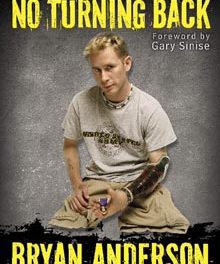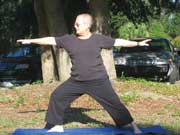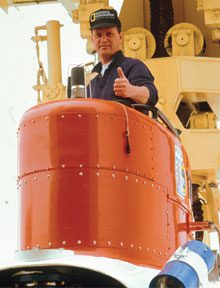 Legendary Explorer & Discoverer of Titanic to Visit the Lowcountry:
Legendary Explorer & Discoverer of Titanic to Visit the Lowcountry:
A Conversation with Dr. Robert Ballard
By Mark Shaffer
Photos provided by National Geographic
“There’s more history in the deep sea than all the museums of the world combined.”
–Dr. Robert Ballard
60 years ago young Bob Ballard read Jules Verne’s 20,000 Leagues Under The Sea and it changed his life. The enigmatic Capt. Nemo catpured his imagination and he dreamed of roaming the ocean’s uncharted depths in a Nautilus of his own. Over more than five decades Dr. Robert Ballard has led more than 150 expeditions leading to discoveries of which Nemo himself would be proud.
Discoveries like the hydrothermal vents in the Galápagos Rift and submarine volcanoes on the Pacific Rise have pushed the boundaries of modern science. But the shipwrecks made his reputation. From ancient mariners in the Mediterranean and Black Seas, to John Kennedy’s PT-109 and Hitler’s juggernaut Bismarck to the most famous of all: Titanic.
Ballard’s career of deepwater exploration began aboard the HOV (human occupied vehicle) Alvin out of Woods Hole Oceanographic Institution. He still refers to his time aboard such vessels as “riding the elevator.” Each dive to maximum depth meant a frigid, cramped 12-hour roundtrip. The payoff was measured in precious minutes at the bottom of the sea. In the decades since, Ballard’s led the development of ROV technology. These “remotely operated vehicles” dive deeper, faster and stay longer than any human operated vehicle currently conceivable. And he finally got his own Nautilus, a state-of-the-art research vessel on a continuing mission to “go where no one has gone before.” Nautilis may be named after Nemo’s submarine, but the ship and her Captain recall James T. Kirk and his Enterprise. At least that’s the impression via satellite hook up from 3000 miles away. And to drive home the point, it’s a safe bet that within the innerspace of our watery world Bob Ballard has boldly gone where no man has gone before more often than anyone else. Ever.
This fall Ballard visits the Lowcountry as guest of honor for the Port Royal Sound Foundation’s second annual Night on the Sound event. I recently sat down with PRSF Marketing Director Alicia Taylor in her office to talk to the man often referred to as the world’s greatest explorer. Ballard, aboard the Nautilus, calls in via satellite phone as we pull up a live feed of the ship at nautiluslive.org. We begin part two of the conversation, as we watch the crew deploy the ROV (remote operated vehicle) Hercules for a deepwater dive into a canyon off Point Conception near Santa Barbara. Even over the satphone, 3000 miles away, we can hear the excitement in Ballard’s voice.
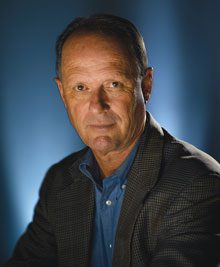 Robert Ballard: Okay, they’re going to pivot it around… there it goes. And now they’re dunking it under to see if it works.
Robert Ballard: Okay, they’re going to pivot it around… there it goes. And now they’re dunking it under to see if it works.
Alicia Taylor: Oh, yeah. We can see it.
RB: Once they get a sign-off from the pilot, they’ll pull the lift cord pin and the vehicle will be free and then basically it’s like a dog on a leash. We’re sort of walking the dog. And now they’ll launch the second vehicle that’s attached to [Hercules] which is called Argus. Argus is a big light bulb with 1500 watts of light and it lights up the world for Hercules to work down below.
(The Quad Display at www.nautiluslive.org affords us a live streaming four-screen perspective with feeds from the Control Room, the ship’s stern and cameras aboard Hercules and Argus.)
On the screen in the lower left you’ll see some heads looking up at the monitors. That’s the Pilot and sitting next to the Pilot is the Navigator, Olivia, who’s a young woman from the Naval Accademy. And behind them is a team of people – the scientists, students and teachers that are in the Command Center aboard the ship. They’ll launch Argus next with Hercules out on its tether.
Mark Shaffer: Dr. Ballard, as we watch these ROV’s go in the water I’m reminded of how the search for Titanic was instrumental in making this possible.
RB: Yeah! I’d been in tons of submarines, in the elevator going up and down for 25 years, with most of my time spent in the elevator and very little time on the bottom. But once you put these vehicles down, they stay down.
So, I took a sabattical and went to Stanford in 1979 and 1980 and I was teaching 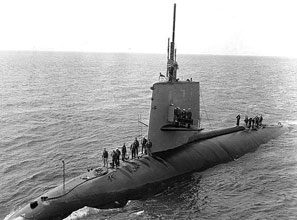 and publishing and then the Silicon Valley and microprocessing took off. And I could see in that technology a vision of what we’re doing now, and I published it in the December issue of National Geographic in 1981. I said, “This is the future.” Well, it took a few years and the first mission was the Titanic. I was a Naval Intelligence officer and the Titanic was really a cover operation for what was at the time a super secret mission to find two subs we lost during the Cold War, the Thresher and the Scorpion. The Scorpion (right) had nuclear weapons and we didn’t want the Soviets to track me with a satellite because we knew where the subs were. We didn’t want them to know.
and publishing and then the Silicon Valley and microprocessing took off. And I could see in that technology a vision of what we’re doing now, and I published it in the December issue of National Geographic in 1981. I said, “This is the future.” Well, it took a few years and the first mission was the Titanic. I was a Naval Intelligence officer and the Titanic was really a cover operation for what was at the time a super secret mission to find two subs we lost during the Cold War, the Thresher and the Scorpion. The Scorpion (right) had nuclear weapons and we didn’t want the Soviets to track me with a satellite because we knew where the subs were. We didn’t want them to know.
And so we used the Titanic (below) as a cover and everyone got excited about the Titanic, which wasn’t even the real mission (laughs). They’ve declassified it so I can tell you without killing you, now (laughter). And that was the beginning of a long journey into human history. We went after the Bismarck, President Kennedy’s PT-109 – we sort of went on a binge for a few years (laughs) and then I got into ancient shipwrecks and did that for about 20 years.
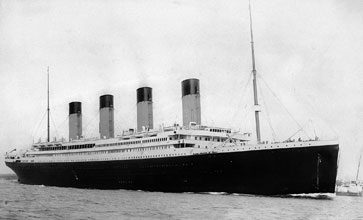
MS: We’ll come back to Titanic, but you came up with a very unique and simple way to find those ancient wrecks.
RB: Yeah! When people asked how I found the Titanic I said, “I got lucky.” But what I learned from the Thresher and Scorpion was that when they died, they imploded on the way down and all sorts of stuff came out and the currents carried that stuff for a great distance. Where these ROV’s are going right now is like the Grand Canyon. Imagine dropping Titanic in the Grand Canyon. It’s not a parking lot. It could easily be hidden in a canyon. So we decided not to look for [the ship], let’s look for its debris trail. It’s like following tracks in the snow – they cover a much greater distance than whatever made them hiding in the trees.
When we tracked the Thresher and the Scorpion we found the wreckage went on for a mile! And so I figured the Titanic has a debris trail. We used that strategy and knew where to start and knew to go east/west and had a disciplined approach and – BAM! – we nailed it. And we did the same with Bismarck. And when we got into ancient shipwrecks I got to thinking that they had to throw trash over the side. And their “empties” were [wine jugs called] amphoras and they’re basically stones (laughs). Those amphorae don’t go anywhere for thousands of years. And I said, “I betcha there’s an I-95 down there marked by empties like any highway without an adopt-a-highway program. The ancient mariners went on deepwater trade routes and they marked them with their litter. I [discovered] one from Carthage to Rome and they drank all the way to Rome!
(Laughter)
So once I found the highway I was able to find the cars along the side of the road,  you know? I found all these shipwrecks and they were all in these very prescribed deepwater trade routes. And no one believed the ancient mariners did that. Of course they did! They traveled in a straight line. So we rewrote the books on that one. But mostly what we found was what was left of the wrecks and cargo. The animals ate everything else.
you know? I found all these shipwrecks and they were all in these very prescribed deepwater trade routes. And no one believed the ancient mariners did that. Of course they did! They traveled in a straight line. So we rewrote the books on that one. But mostly what we found was what was left of the wrecks and cargo. The animals ate everything else.
And then we heard about this place called the Black Sea where the water’s poisonous below a hundred meters and thought that would be perfect for preservation. We went in there and found perfectly preserved shipwrecks. In fact, just before I left a couple of years ago, I found a ship from the time of Alexander the Great with human remains.
MS & AT: Wow!
RB: Yeah, actual DNA. There’s estimated to be three million ancient shipwrecks in the deep sea and we’ve found 50. There’s something for the next generation to discover! And what are we going to learn? We’re going to learn a hell of a lot. There’s more history in the deep sea than all the museums of the world combined. We’re not going to run out of work.
MS: Dropping in on these sites, you’re revisiting tragedies. You returned to Titanic and found something shocking.
RB: We refused to take anything from Titanic. We tried to protect it from the salvagers. In fact when I found the Titanic I went to the courts and asked if I owned the Titanic and they said, “Absolutely,” because it was an abandoned shipwreck. They fall in different categories. If someone still owns it, it’s theirs and if it’s a military ship it still belongs to that country. When we found the Bismarck, even though it was in the middle of nowhere, Germany still owns it and they’ve set rules. We couldn’t go inside or take things and all that. But when the Titanic sank the insurance company paid it off, and then wrote it off their books as a loss, so it became an abandoned shipwreck.
The court said all we had to do was go down there and pick up something – a plate, anything – bring it to the court and they’d award us ownership. And I said, “I don’t want to remove anything from from [Titanic]. And they said, “Well, then, you can’t own it.”
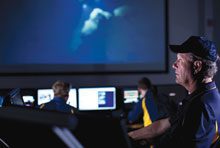 Now they’re rewriting the rules, but back then that’s the way it worked. I couldn’t stop anyone because I didn’t want to desecrate it and others didn’t mind going down and pulling up everything they could. So they did. I couldn’t stop them.
Now they’re rewriting the rules, but back then that’s the way it worked. I couldn’t stop anyone because I didn’t want to desecrate it and others didn’t mind going down and pulling up everything they could. So they did. I couldn’t stop them.
But now the Titanic’s older than a hundred years and falls under UNESCO protection. And also because the Law of the Sea’s evolved it will soon be part of Canada. They’re filing claims right now which will turn the area in which Titanic rests into Canadian waters.
MS: With all of these remarkable expeditions and discoveries under your belt, is there still something out there, some ultimate goal to discover?
RB: You know kids will ask, “What do you want to find next?” And I’ll say, “You don’t understand, I don’t know what’s out there.” I’m 74 and I look back at building the Nautilus and ask myself, “Why the hell did I do that?” It’s because I’ve been going to sea for 40, 50 years on ships like this –150 expeditions – and as I look back and reflect I think the most important thing I found really wasn’t the Titanic or the Bismarck, it was the hydrothermal vents and the new life forms that taught us the origin of life on earth and how to find it elsewhere in the universe. None of this was in my grant. I didn’t set out to find these things. I didn’t know hydrothermal vents existed. I went looking for “A” and found “B” and “B” was much more important. So I thought it was important that we have a ship that wasn’t locked into some [rigid agenda] and have one that goes where no one has gone before on planet earth. And that’s the Nautilus’ mission. Where we’re headed this second, no one has ever been before. We’ll stay down there for days. I don’t know what I’m going to bump into. It’s like Louis and Clark. They didn’t know what they were going to find, but they were going to find out. And that’s the nature of true exploration.
GET MORE
The 2nd Annual Port Royal Sound Foundation Night on the Sound is October 22 featuring guest of honor and speaker Dr. Robert Ballard and honoring local Environmental Steward, Nancy Schilling. For tickets and information visit www.portroyalsoundfoundation.org or call (843) 645-7774.
Read Part One of this Interview
Follow Dr. Ballard’s adventures aboard the Nautilus, watch the missions live and interact with the explorers at www.nautiluslive.org , also on Facebook, Twitter and Instagram.


